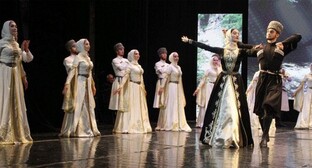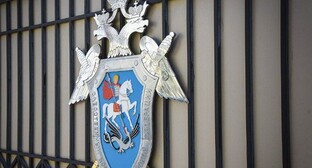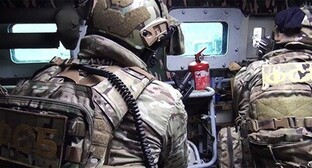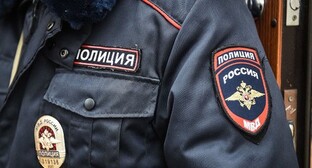30 April 2003, 17:17
Krasnodar
Centre of Krasnodar kray (region), 1,539 km south-south-east of Moscow. Located in the Kuban-Priazov (Kuban) Lowland, on the right bank of the Kuban River. The climate is moderately continental. January temperatures average to -5?C, July ones to 24?C. Precipitations of about 600 mm a year.
Junction of railway lines and highways to Novorossiysk, Timashevsk, Tikhoretsk, Stavropol. Airport. Population (1992 est.) 634.5 thousand, (1897 est.) 66 thousand, (1926 est.) 153 thousand, (1939 est.) 193 thousand, (1959 est.) 313 thousand, (1970 est.) 464 thousand, (1979 est.) 557 thousand.
Founded in 1793 (according to other data, in 1792) by Black Sea (former Zaporozhye) Cossacks moved to the Kuban region after annexation of the Western Ciscaucasia to Russia. The fortress, built in the Kuban River bend in 1794 and named Yekaterinodar, served as the centre of the Black Sea Cossack Army; it was located almost in the middle of the frontier, running along the right bank of the Kuban at that time. The fortress imitated a Zaporozhye corncrib and was quadrangular. The area to the north of the fortress was built up with residential quarters, where families of serving Cossacks settled. In 1794, there was only 9 houses and 75 huts in the town, and the male population amounted to 271; in 1796, there were 365 houses, where more than 900 men and 760 women lived.
Until the middle of the 19th century, Yekaterinodar was the major advanced post of the Black Sea cordon line (from the Taman Peninsula to the fortress of Ust-Labinsk, 65 km of Yekaterinodar). In 1796, the town experienced a revolt of Black Sea Cossacks, who came back from the unsuccessful Persian campaign of 1796; the revolt was suppressed. In the early 19th century, an elementary school (1803, transformed into an uyezd (canton) school in 1806) and an army grammar school (1820) were open. 4 fairs were held every year: on the Days of Annunciation, Trinity, Transfiguration and Intercession; there was a barter yard, where mountaineers came with their goods. In 1842, a trade company of Black Sea Army Cossacks was established. Military events at the frontier constrained development of Yekaterinodar. When the Caucasian war of 1817-1864 was over, its position essentially changed. In I860, Yekaterinodar became the centre of Kuban oblast (province); in 1867, received the official status of a city and established the municipal government and the duma. The newspaper of Kubanskiye Voyskovye Vedomosti (since 1863) and the private newspaper of Kuban (since 1882) were issued.
The 1868 law, allowing all non-resident to settle and acquire property in stanitsas and towns of Kuban oblast, was very important for development of Yekaterinodar as it was the beginning of broad emigrant colonisation of Kuban region. In the 1860s, Kuban oblast transformed into a large area of agricultural industry, which made the city more important. Driving of the Tikhoretsk - Yekaterinodar - Novorossiysk railway in 1870-1880 contributed to its transformation into a large transport, commercial and industrial centre by the end of the 19th century (sales of bread, tobacco, skins; milling, butter-making, distilling, tobacco, leather-processing, etc. industries). In the late 19th and early 20th centuries, Yekaterinodar got first repair and engineering workshops. The Kubanol metal-cutting factory (nowadays referred to as the Sedina machine tool plant) and an iron foundry (nowadays referred to as a strain-measuring gear factory) were built in 1910-1911 and in 1915 respectively. They processed Donetsk metal, burning Donetsk coal. A refinery based on Maykop petroleum, discovered in 1909, was established. The Yekaterinodar - Primorsko-Akhtyrskaya railway branch was built in 1916.
During the Civil war, Yekaterinodar and its environs were the arena of fierce fights. On March 17, 1920, after the Volunteer Army under command of General A.I. Denikin was defeated, Red Army units entered the town. In December, 1920, Yekaterinodar was given the name of Krasnodar. During the Great Patriotic War of 1941-1945, it was occupied by Nazi troops (from August 12, 1942 to February 12, 1943), who damage the city heavily.
Present Krasnodar is an industrial, transport and cultural centre of Kuban region. Heavy industry (primarily, machine-building) accounts for about 1/3 of all industrial production of Krasnodar kray. The leading machine-building and metal-cutting plants, operating in Krasnodar by the beginning of the 1990s, were Krasnodarselmash, the Krasnodarrismash rice-harvester works, the Sedina machine tool plant, a compressor plant, an electrical measuring instrument plant, a measuring device works, Tenzopribor, a gas-fitting plant, a medical instrumentation works, Krasny metallist. Enterprises of oil refining and chemical industry (PО Krasnodarnefteorgsintez; chemicals plant; plastic works, general mechanical rubber goods plant, chemicals plant, etc.); production of building constructions and materials. Light industry (worsted cloth and cotton mills, leather-processing factories; knitting mill and clothes factory), flavouring industry (fat-and-oil factory, meat-processing plant, dairy factory, tobacco factory, etc.), woodworking industry (furniture and woodworking plant, etc.). Porcelain and faience works, integrated biochemical and vitaminised drugs works. Institutes conducting research in the field of exploration of petroleum and gas deposits, production and refining of petroleum and gas, as well as technologies of tractor and agricultural machine-building and food-processing industries.
Krasnodar has Kuban State University and an agrarian university, a polytechnic institute, Kuban Medical Institute, an institute of art and culture, an institute of physical culture, as well as a branch of Moscow Commercial University.: Drama theatre, musical comedy theatre, puppet-show. Philharmonic society. Circus. Historical and archaeological memorial reserve, art museum.
Krasnodar is a beautiful, typical city of the south of Russia, stretching for 10 km along the bank of the Kuban, on the perfectly flat surface of its second and partially third bottom. The gridiron pattern of streets in the central part of the city was kept since the beginning of the 19th century. In the 19th century, it was built up with wooden and stony houses, including those in the spirit of provincial classicism; in the late 19th and early 20th centuries, with administrative, public and residential houses in the style of eclecticism and Art Nouveau. After the Great Patriotic War, it was re-built and re-novated. In the 1960-1980s, new residential areas, administrative and public buildings, resort complexes were built. The planning axis of Krasnodar is its thoroughfare, Krasnaya Ulitsa, going from the square located near the bank of the Kuban to the north through the city centre. Primary establishments, institutes, libraries, theatres, publishing houses, large shops are located in this street or nearby. Quarters of one- or two-storeyed residential houses with small yards, planted with fruit trees and vine, are in a distance from the thoroughfare. Pavements are lined with pyramidal poplar, plane, acacia. The central part of Krasnodar has relatively few industrial enterprises, their sites adjoining the bank of the Kuban. There are a lot of green plantations (М. Gorky has got more than 100 species). Most plants and factories are in the eastern part of the city, near the railway; industrial communities with multi-storeyed buildings are also here. In the 1960-1980s, a number of industrial enterprises were built in the western and northern industrial zones, connected to the city centre by tram, bus and trolleybus lines. Built-up area takes up 1/4-1/3 of the entire territory of Krasnodar; all the rest is primarily used for gardens and kitchen gardens.




